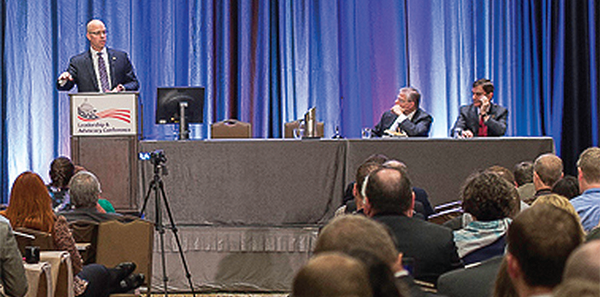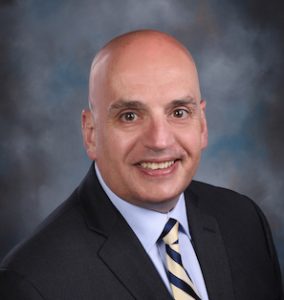
ACEP physicians took to Washington, D.C., and Capitol Hill at the 2016 Legislative Advocacy Conference May 15-18. This year featured record-breaking attendance with more than 600 participants, including 200 first-timers. Having that many newcomers attend the meeting is a great sign that more emergency physicians understand the importance of effective advocacy. After last year’s breakthrough on repeal of the flawed sustainable growth rate and the passage of Medicare and Chip Reauthorization Act (MACRA), this year’s conference took on a more “forward-looking” tone with a focus on creating a better future for emergency medicine in a rapidly changing health care delivery landscape.
Explore This Issue
ACEP Now: Vol 35 – No 06 – June 2016Sunday Fun Day
Although the official ACEP conference program started on May 16, the Emergency Medicine Residents‘ Association (EMRA) and the ACEP Young Physician Section took the lead with their half-day “Health Policy Primer” educational program on Sunday afternoon. This program is designed to warm up residents, students, and those younger physicians who are attending the meeting for the first time so they get the most out of the experience, especially from the Capitol Hill visits. After an overview and introduction to the program by EMRA President Ramnik “Ricky” Dhaliwal, MD, his brother Jamie Dhaliwal, MD, discussed the basics of health policy and the “alphabet soup” of acronyms that are a must to understand the players and programs in D.C. Following Dr. Jamie Dhaliwal, the program consisted of a who’s who list of experts, including Mike Granovsky, MD, talking on fair payment and balance billing; Douglas McGee, DO, updating the group on graduate medical education funding; Brendan Carr, MD, presenting payment and delivery reform basics; and Aisha Liferidge, MD, leading a journal club discussion on alternate payment models. The program was capped off by Dr. Ricky Dhaliwal and John Rogers, MD, vice president at ACEP, presenting their views on how emergency physicians can, and should, get more involved in the health policy decision-making process as advocates for patients and our specialty. EMRA also announced the fourth edition of its Emergency Medicine Advocacy Handbook, edited by Alison Haddock, MD, and Nathaniel Schlicher, MD. Downloads or hard copies are available at www.emra.org.
The social opener of the conference is the National Emergency Medicine Political Action Committee (NEMPAC) VIP reception. All “VIP” level contributors to NEMPAC are invited to the event, which was again held at the Top of the Hay rooftop room in the Hay-Adams hotel. Supporting NEMPAC is the easiest way to support ACEP’s advocacy efforts. If you aren’t already a NEMPAC contributor, access the NEMPAC website at www.emergencyphysicianspac.org or through the ACEP website at www.acep.org under the Advocacy tab. In addition to the official Hill visits with members of Congress (MOC), NEMPAC coordinated “Dine Around” dinners, each with MOC. Small groups of EM physicians, 10 to 12 per dinner, attend these fundraising gatherings. These dinners provide quality time with MOC in order to take the “deeper dive” on the issues and challenges that face us every day.
Official Kickoff
The meeting officially kicked off with a welcome from ACEP President Jay A. Kaplan, MD, who got the group all fired up by demonstrating new advocacy technology that is now available to all state chapters. Every attendee was able to email, Facebook, and tweet their MOC to let them know that EM physicians were in D.C. It was a powerful demonstration of how technology can make advocacy easier and more effective. The rest of the day was just as engaging with talks on disruptive innovation, alternative payment models, and ACEP’s quality initiatives under MACRA and Merit Based Incentive Payment System (MIPS). Although adjustments to Medicare physician payments under MIPS won’t start until 2019, the data collection begins January 2017.
Luncheon speaker Charlie Cook, a nationally recognized political analyst, offered insights into the current election cycle and gave his predictions about the presidential race. Following Mr. Cook’s talk was a presentation about good and bad regulations—underscoring the importance of what happens after a law is passed and the regulatory agencies take responsibility for establishing how programs will be operationalized. Closing out the day was a session entitled “State Strategies to Deal with Out of Network/Balance Billing.” This rapidly has become the hot topic in EM as many states are considering legislation that would significantly change the rules of billing patients. Dr. Kaplan made this issue a cornerstone of his presidency and his creation of the term “fair coverage” has completely changed the tone and tenor of the discussion with legislators and policymakers. Through the “fair coverage” campaign, ACEP is leading the house of medicine in educating legislators and policymakers on how their constituents, and our patients, are being unfairly treated by insurance companies that are selling insurance policies with exorbitantly high out-of-pocket deductibles. For more information on the campaign, go to www.faircoverage.org.
Working the Hill
Tuesday morning’s program was highlighted by presentations from the two EM physicians who are MOC. Joe Heck, DO, (R-NV), and Raul Ruiz, MD, (D-CA), both challenged attendees to be more active and engaged in health policy and advocacy. Brad Gruehn from the ACEP D.C. office also presented an overview of key issues, which included the following:
- The Opiod/Narcotic Issue – discussing recent CARA (Comprehensive Addiction and Recovery Act) passed in the Senate and the House.
- Medical Liability Reform for Emergency Medical Treatment and Labor Act (EMTALA) Services – ACEP’s continued effort to establish federal liability protection for EMTALA mandated care in the ED by EM physicians and on-call specialists.
- Mental Health Reform – asking MOC to pass meaningful reform to give EM the needed resources to provide appropriate care to patients with mental health illnesses.
- Improving EMS Delivery of Care – supporting the Patient Protection Access to Emergency Medications Act of 2016, which would allow for continued administration of controlled substances to patients by EMS under standing orders.
ACEP “Takes the Hill” event closed the conference on Tuesday afternoon. Soapbox Consulting arranged all of the Hill visits on behalf of ACEP. In addition, its Soapbox app provided attendees with information on the meeting visits, background materials for the meetings, and bio details for each MOC.
It was inspiring to walk the Capitol hallways and see how many EM docs are “working the Hill” with MOC and staffers to advocate for appropriate policies and laws that will improve our capacity and capabilities to care for our patients.
The last day of the meeting, “Leadership Day,” was about being, or becoming, a more effective leader, not just in Washington, but in your ED, your hospital, your group, and the greater health care community. Attendees heard from and interacted with Dr. Kaplan and President-Elect Rebecca B. Parker, MD, American Medical Association President Steve Stack, MD, and others.
Pages: 1 2 3 | Multi-Page






No Responses to “ACEP 2016 Legislative Advocacy Conference Highlights”